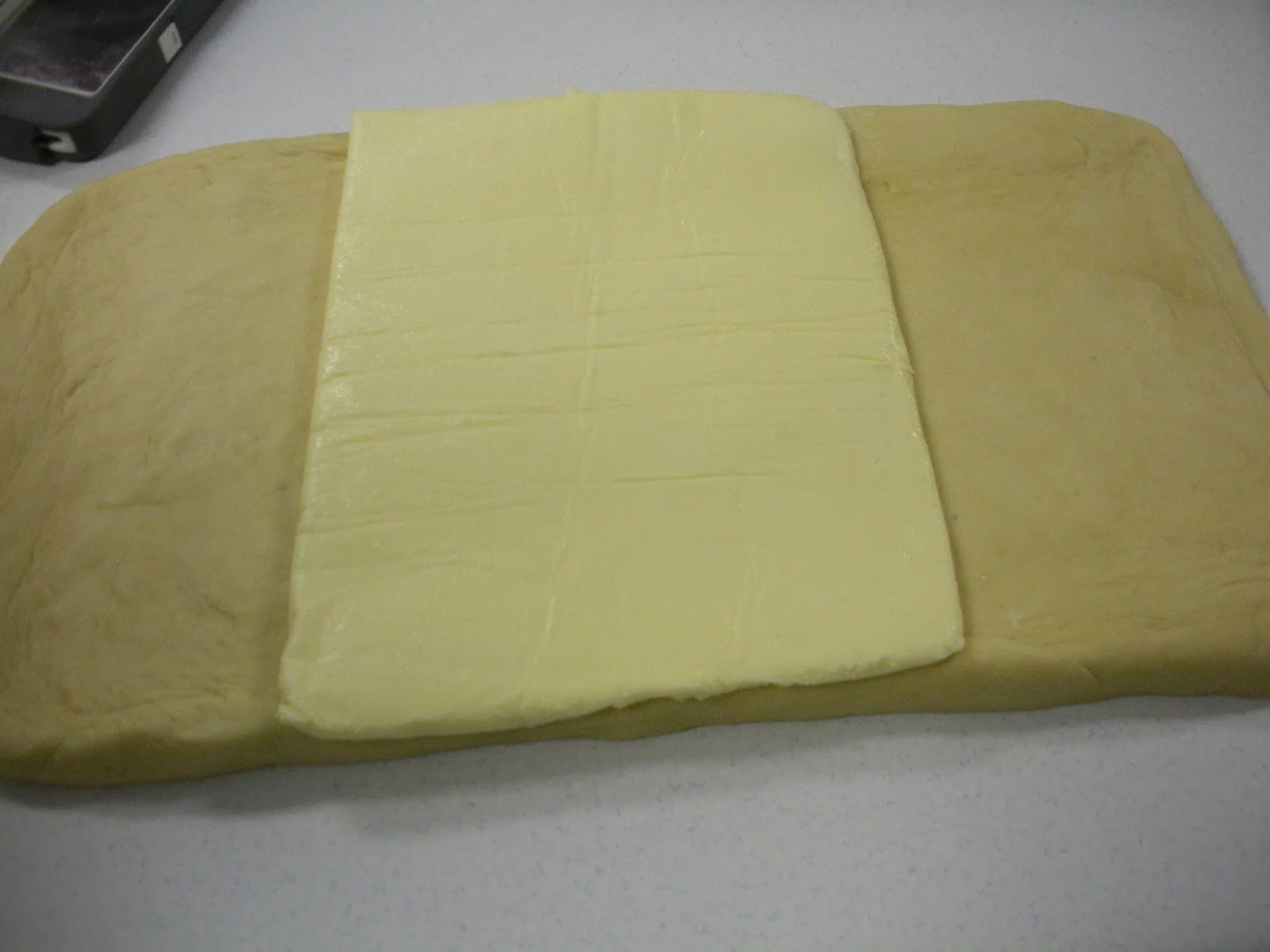 |
| Cut croissant showing lamination |
Croissants are the epitome of French baking, this wonderfully flaky pastry can be eaten plain, served with honey or jam, or turned into filled pastries. The croissant takes three days to make, but requires a relatively small amount of work over those three days. We made both traditional croissants and filled pastries with our dough.
 |
| Dough with butter block |
The croissant takes three days to create but requires a relatively small amount of work over those three days. On the first day the dough is mixed before being refrigerated over night. Also on the first day, we created a butter block. A butter block is a flat square of butter which has been made by hitting European butter (used for its higher fat content) with a rolling pin until it is even, flat, and pliable. The butter block is then refrigerated over night. On day two, the dough is placed in the freezer for 30 minutes and the butter block is pounded again to ensure that it is pliable. The butter block is then placed on top of the dough, which is folded over the dough to enclose it. The dough is then rolled out, ensuring to regularly flip the dough to keep the top and bottom layers even. Once the dough is about three times as long as it is wide a tri-fold is done to create layering ( this is what causes the lamination of the dough). The dough is rotated 90 degrees and the rolling and tri-fold is repeated. The dough is allowed to rest before a final trifold is done, which gives 27 separate layers of dough and butter. The dough is placed in the freezer for an hour, before being placed in the refrigerator overnight. On the third day, the dough is placed in the freezer for 30 minutes before being rolled out and trimmed. From here the dough is cut in to the shapes desired for the final product. To make traditional croissants, the dough is cut in to skinny triangles which are then rolled up. To make the filled pastries, the dough is cut into squares before the final cuts are made to create the final shape desired.
 |
| Filled pastries and traditional croissants |
For our filled pastries we used a combination of pastry cream and an apple filling, which created a delectable product that was wonderful fresh out of the oven and the next morning for breakfast. Our croissants were very large, which may be from not rolling them out thin enough, but were very tasty and the flakiness was perfect. The croissants were one of my favorite breads and are something that I plan on making to show off my baking skills to others.






No comments:
Post a Comment